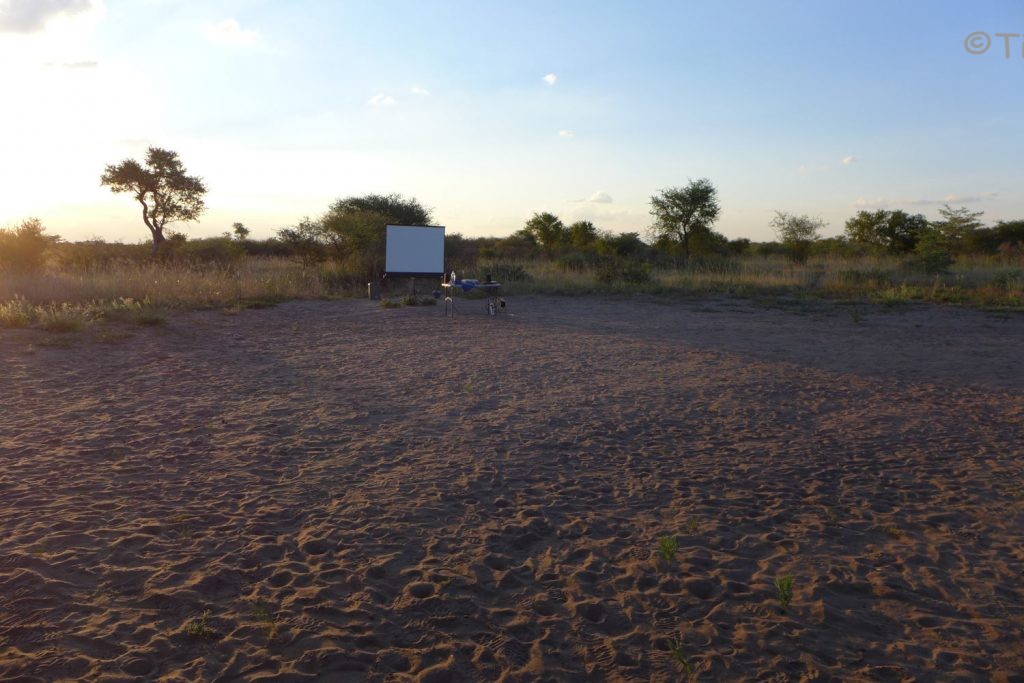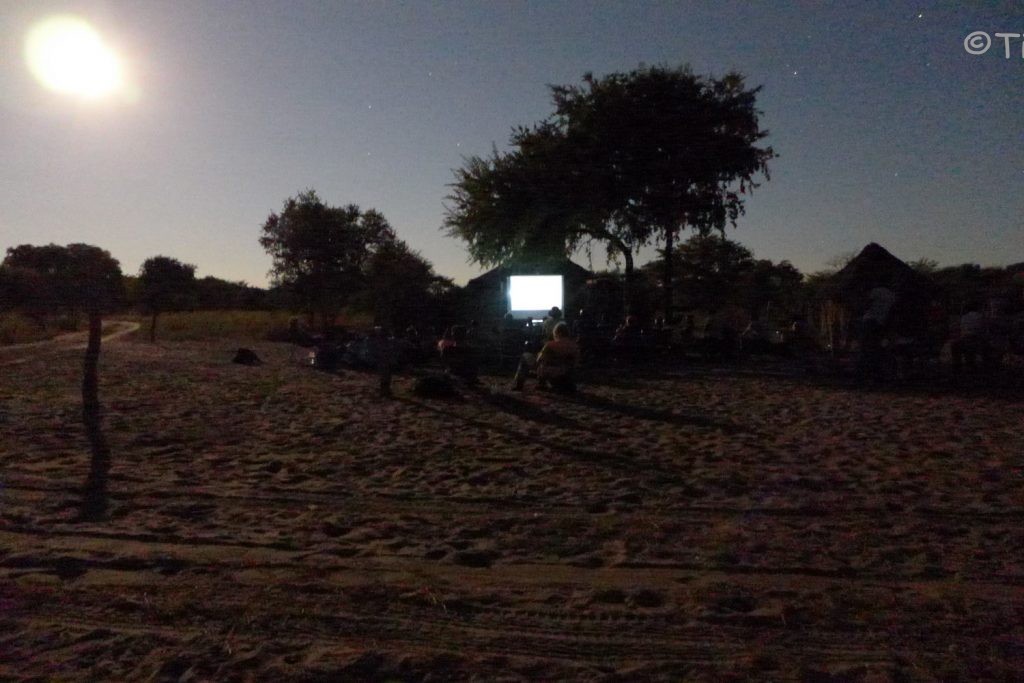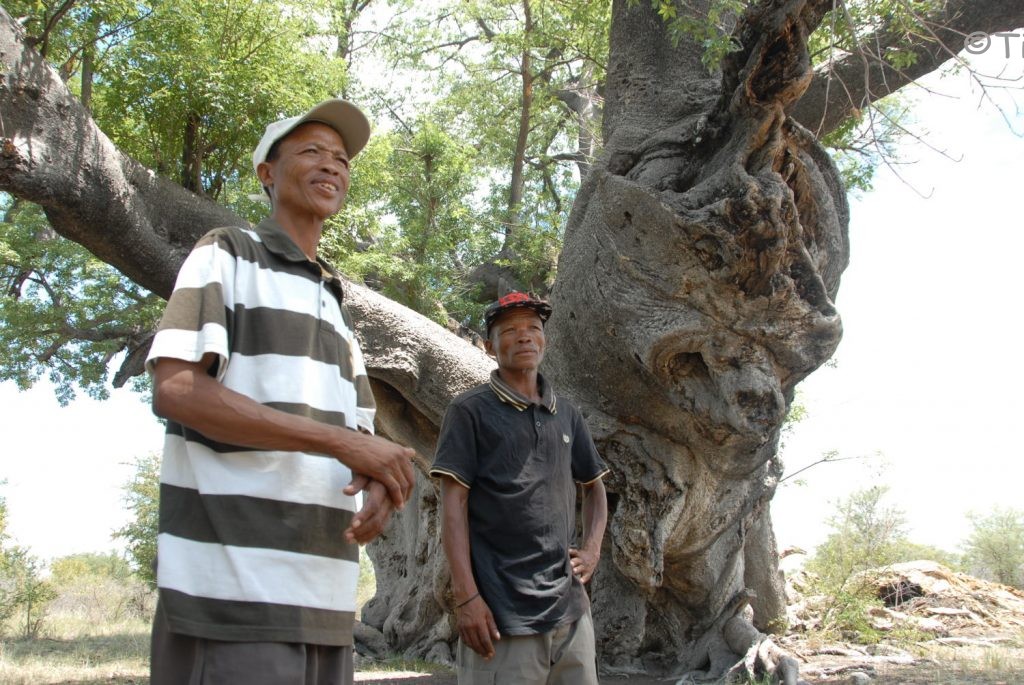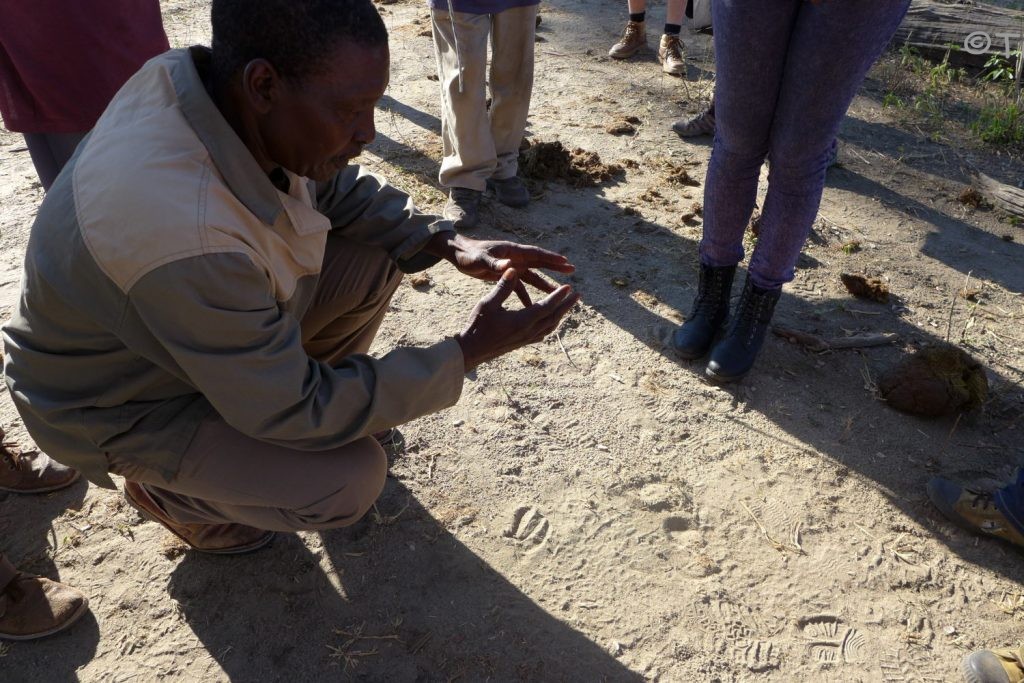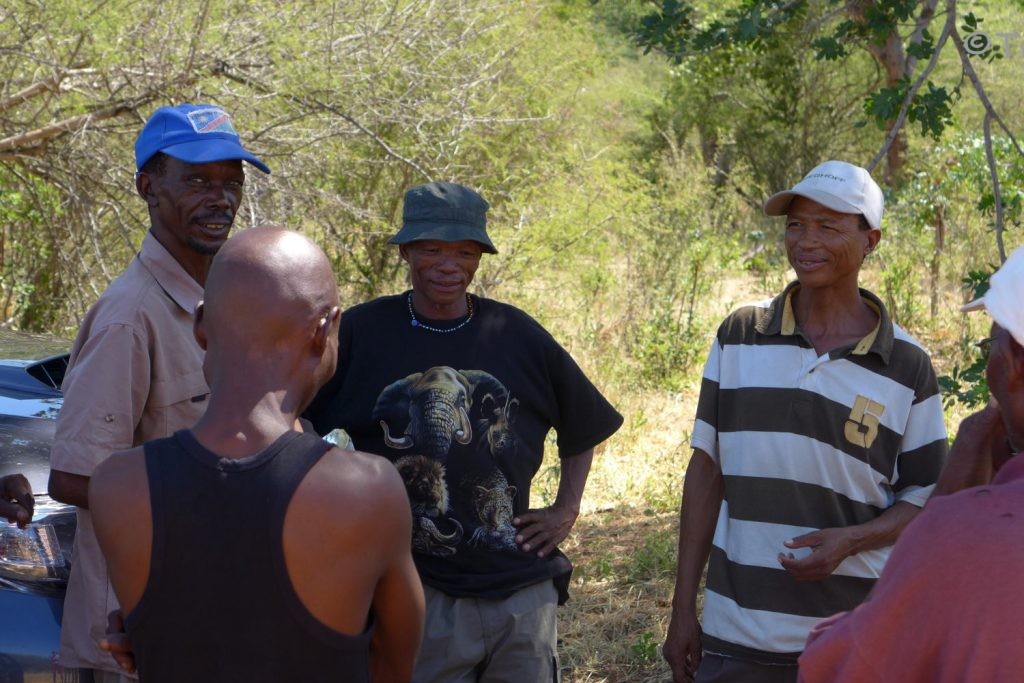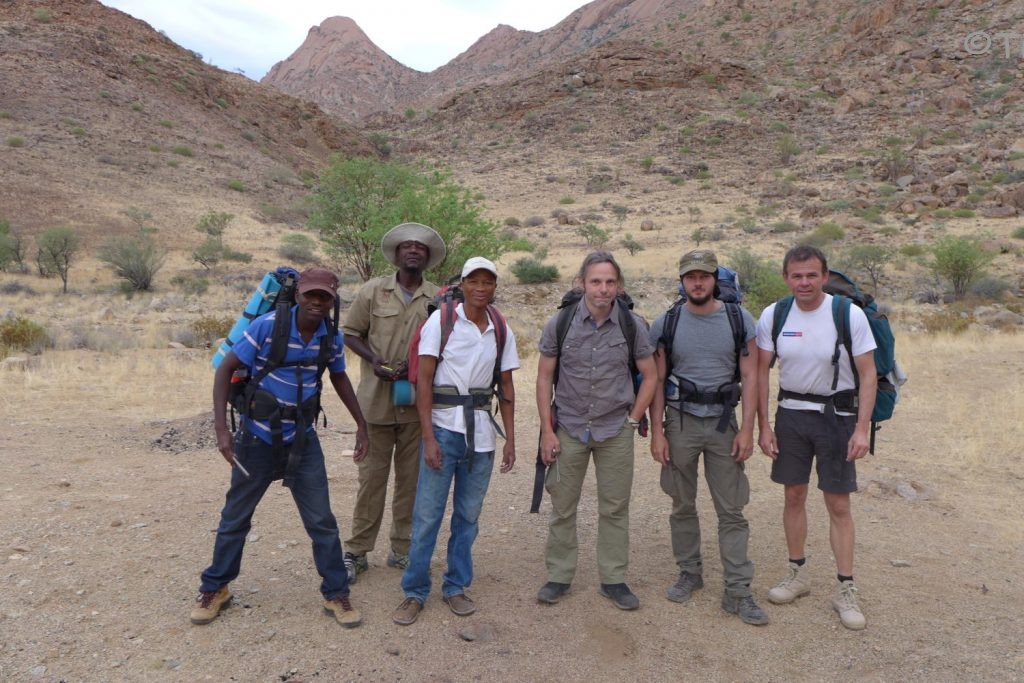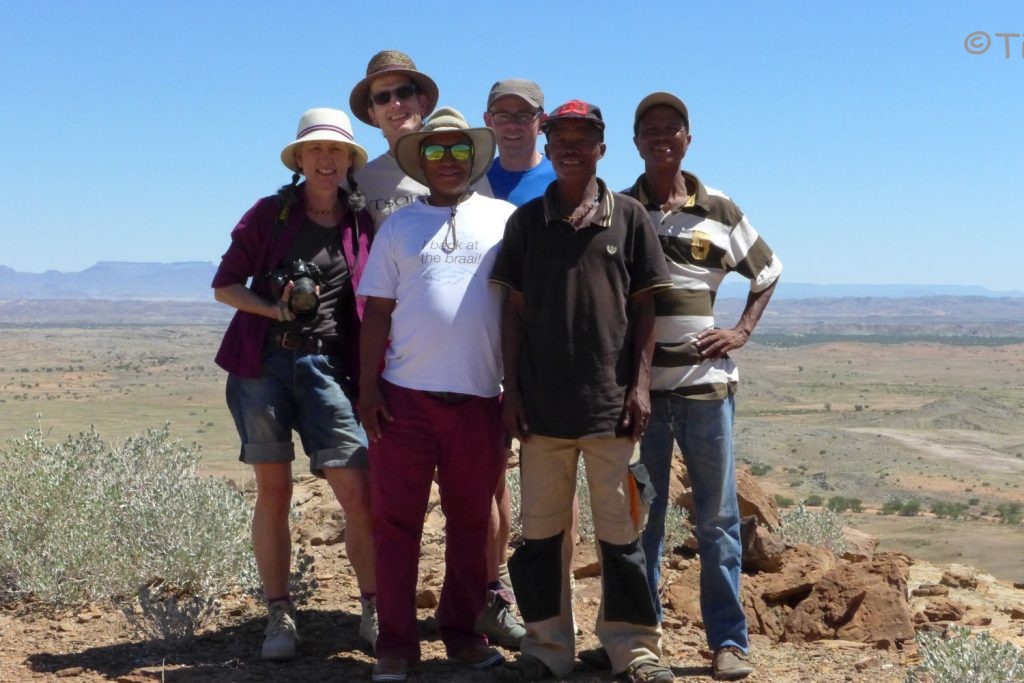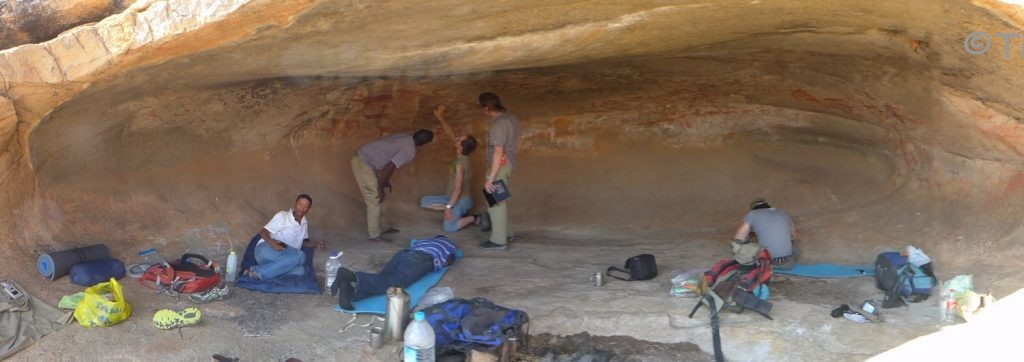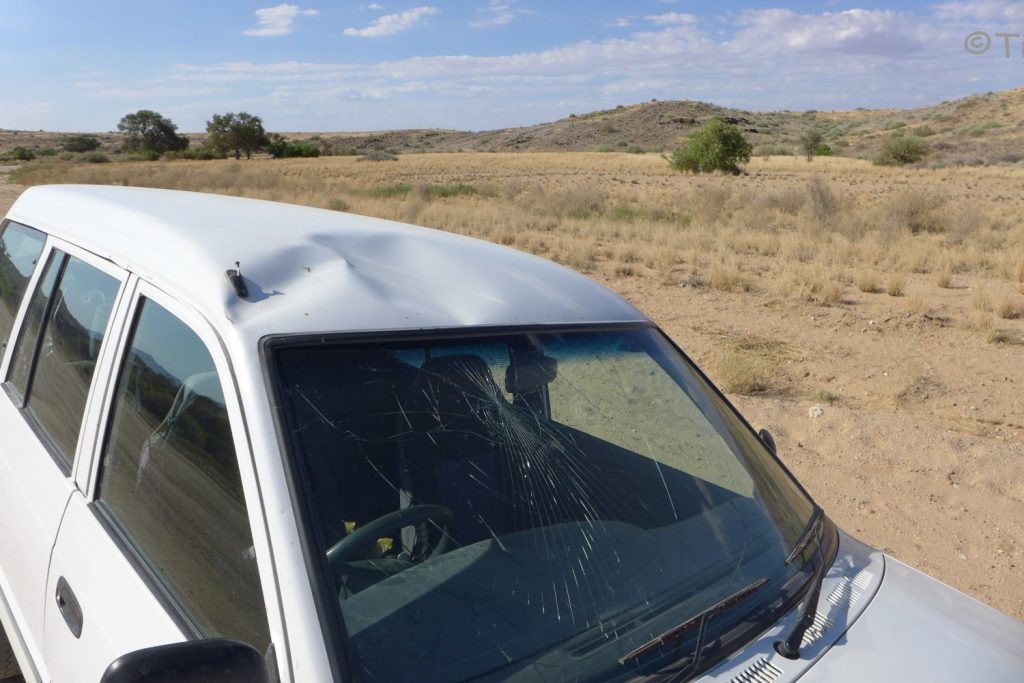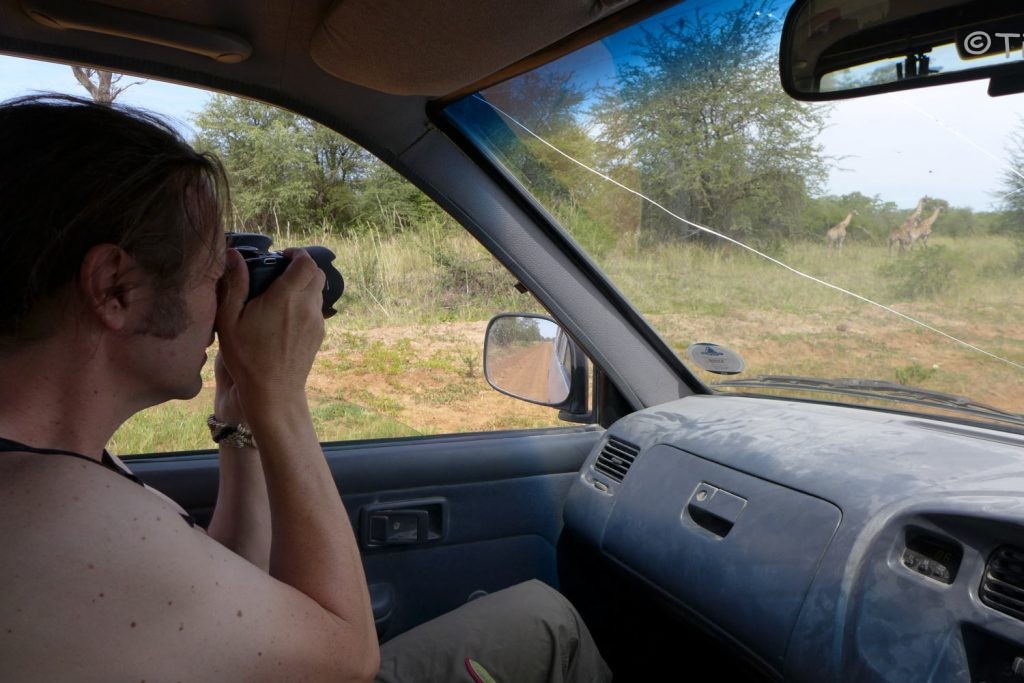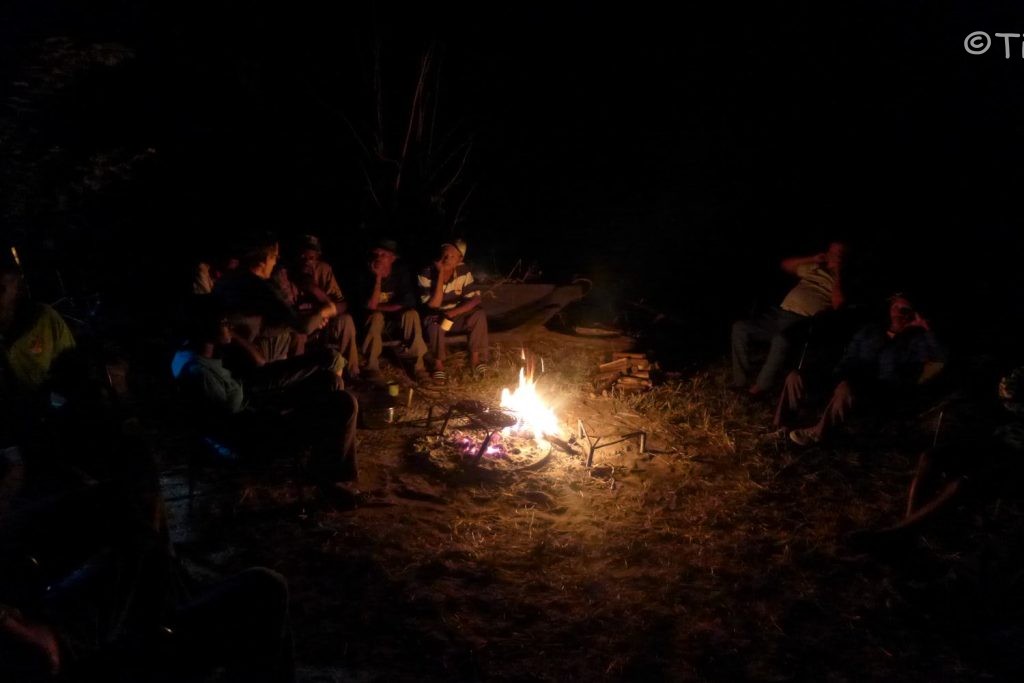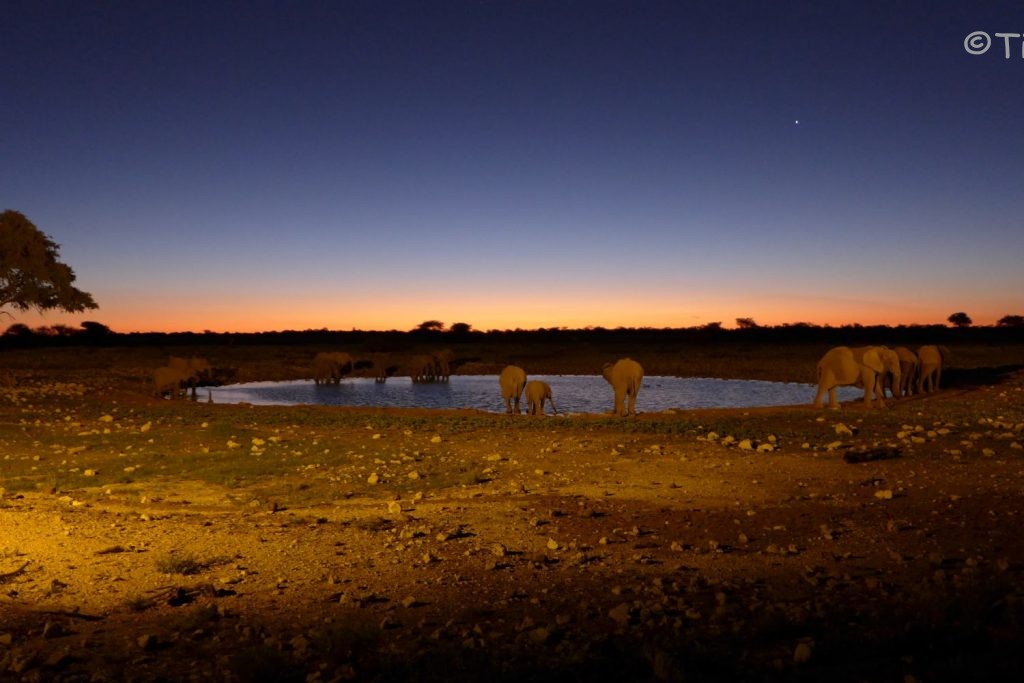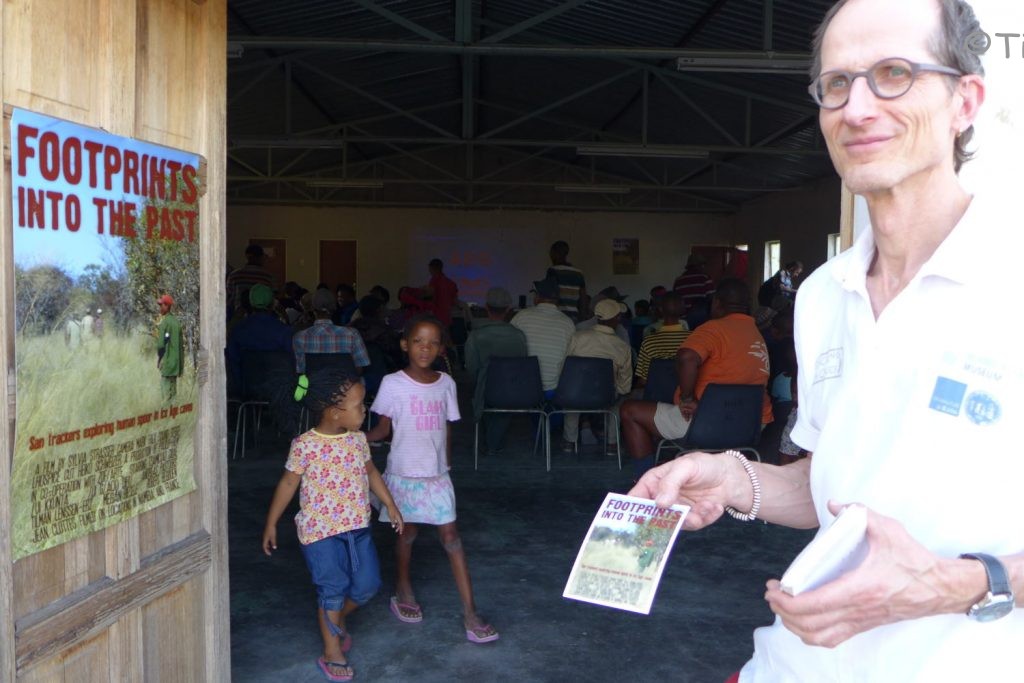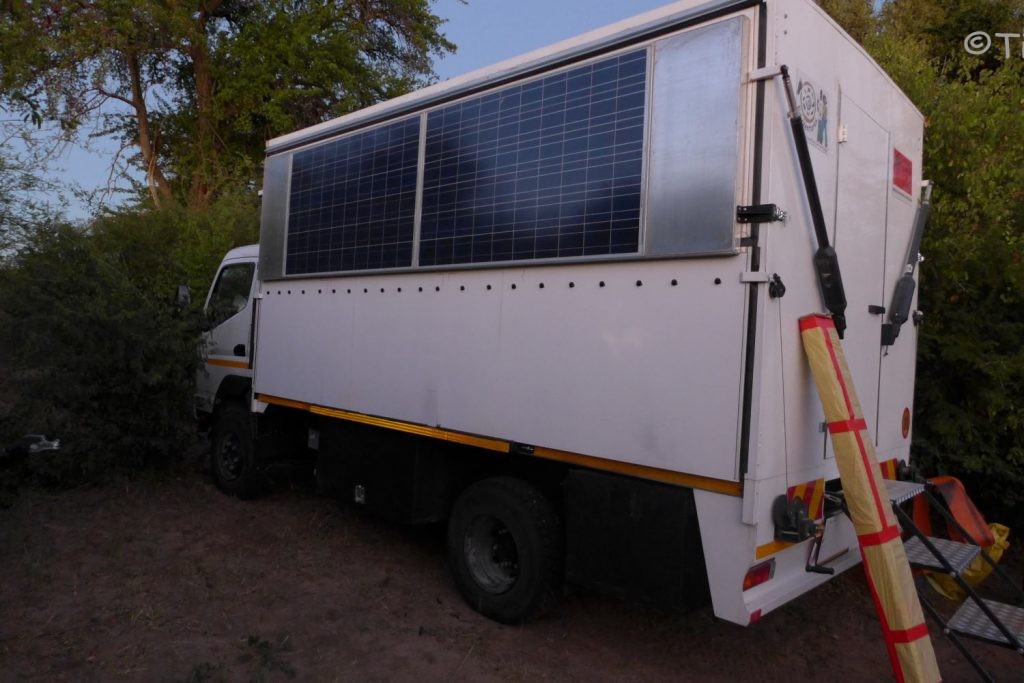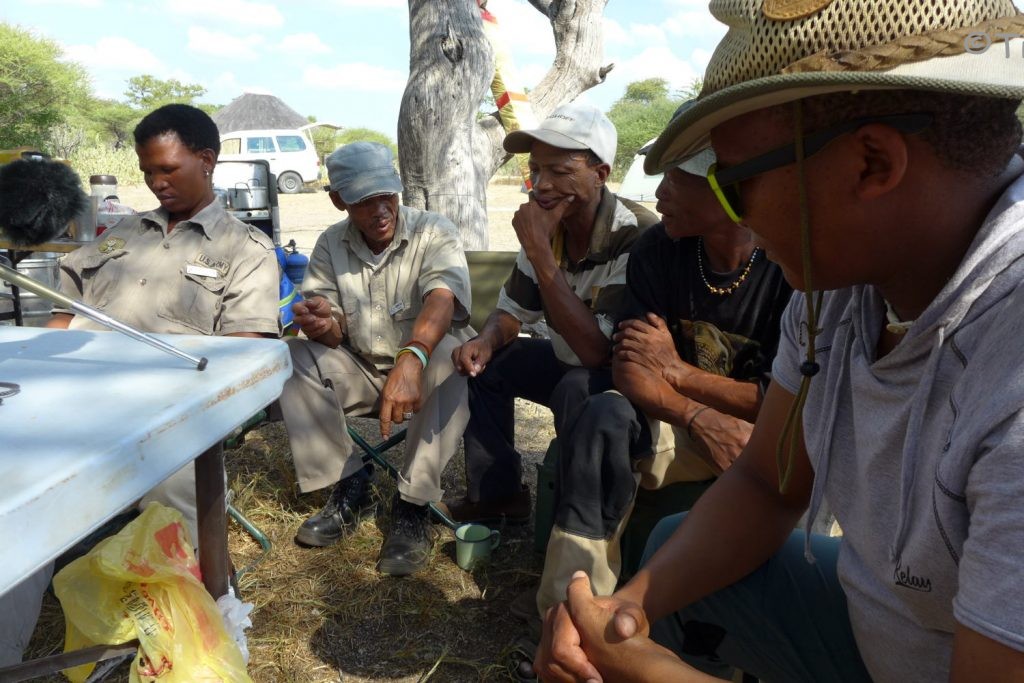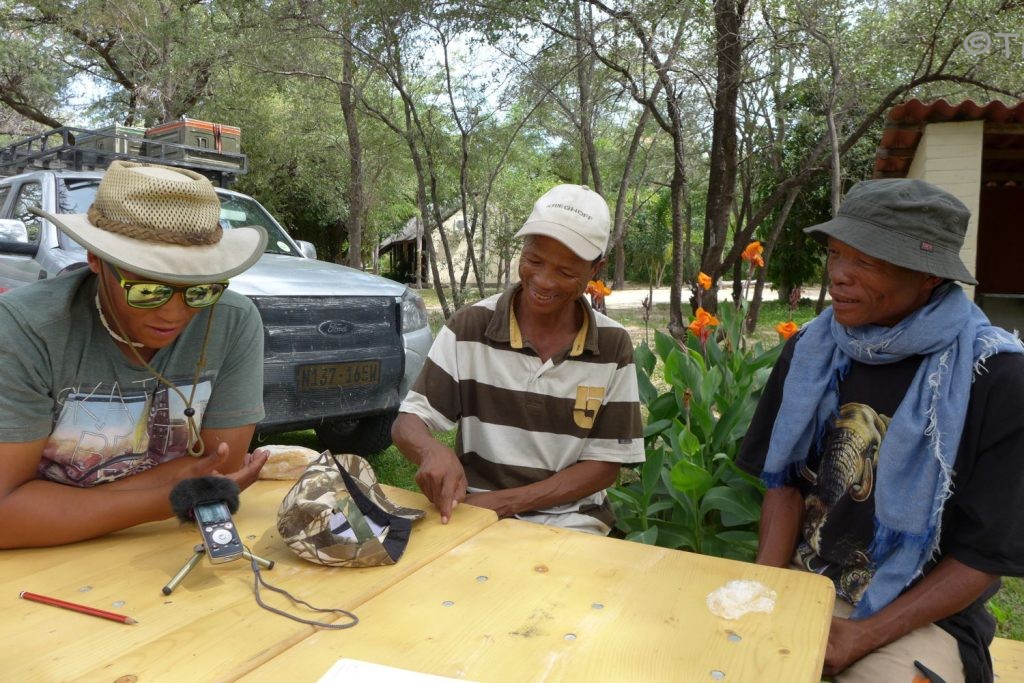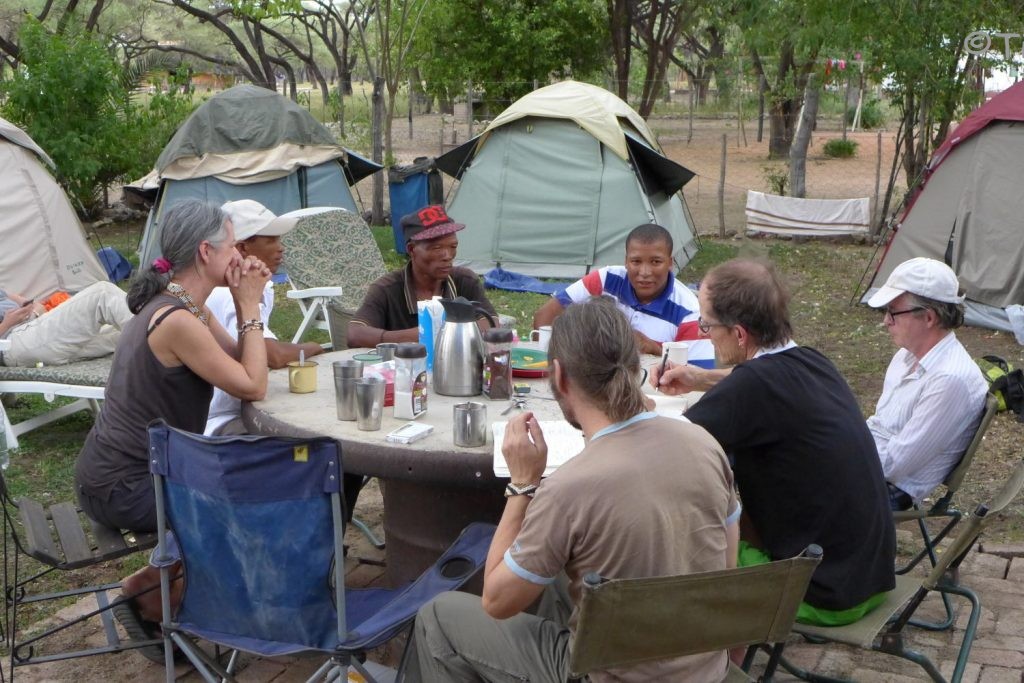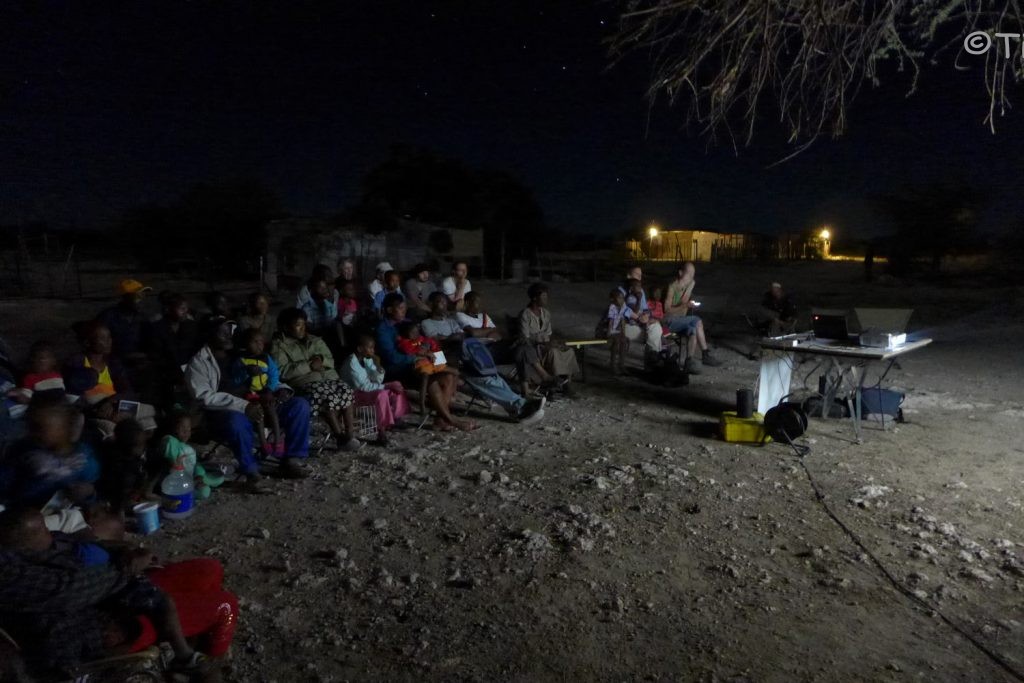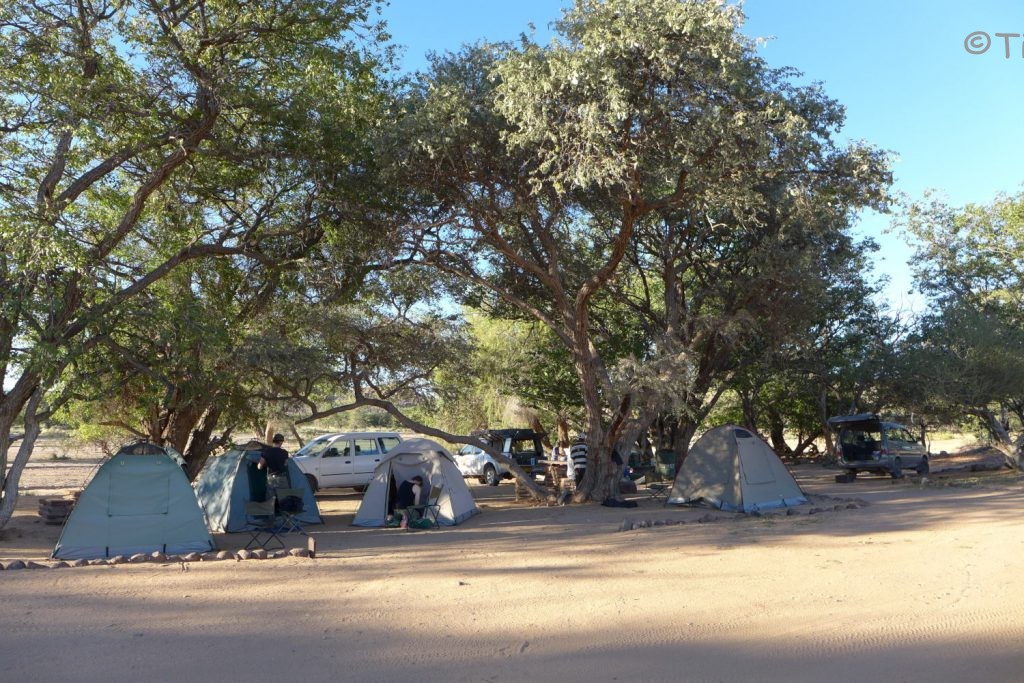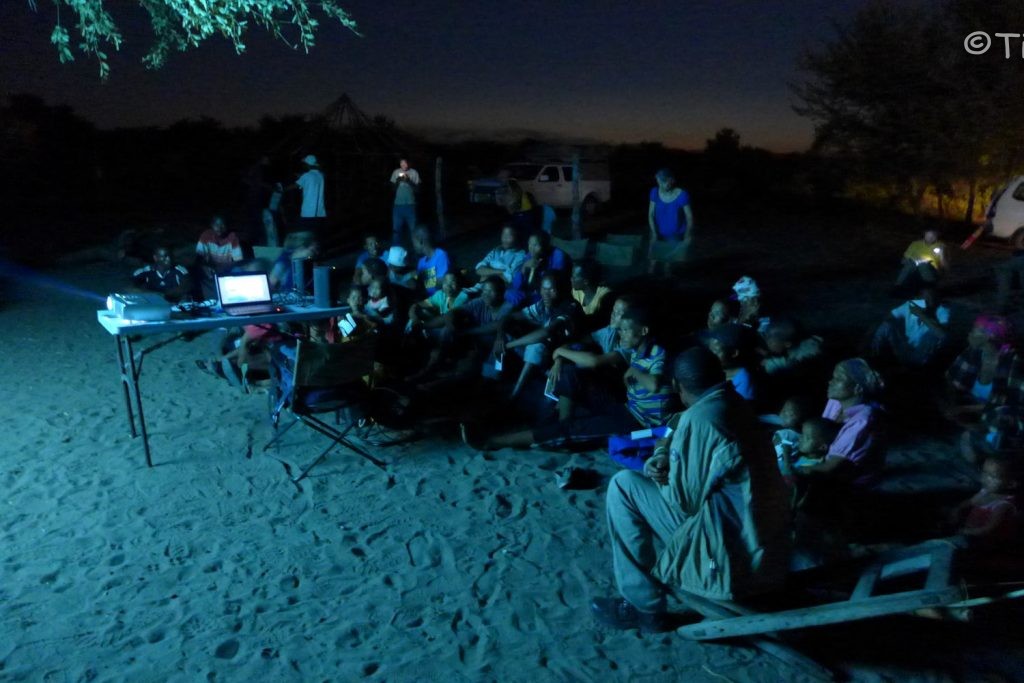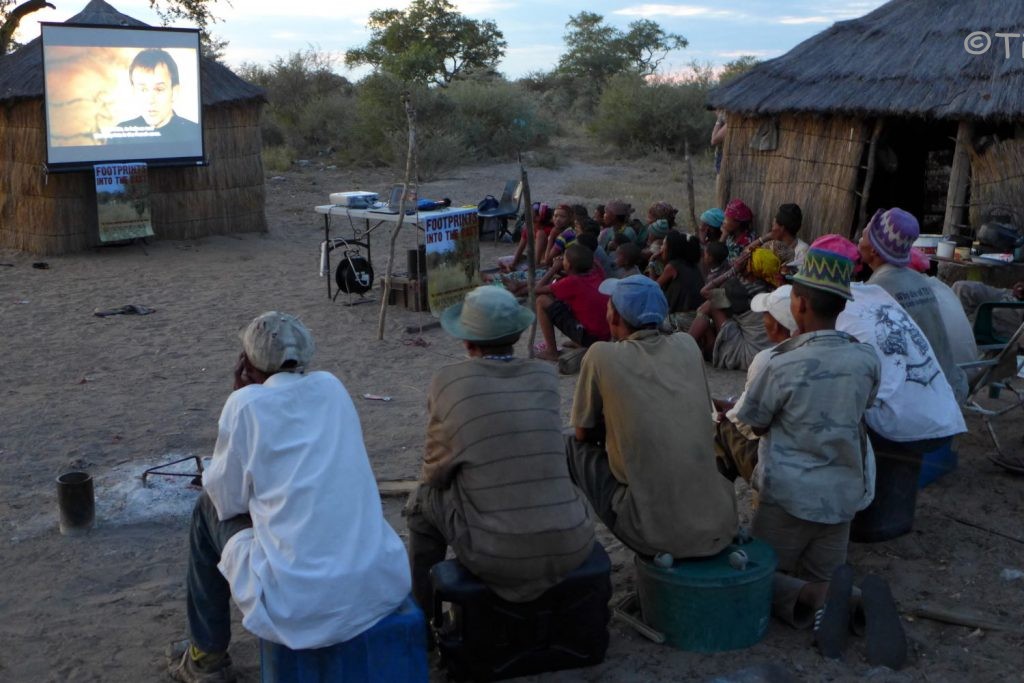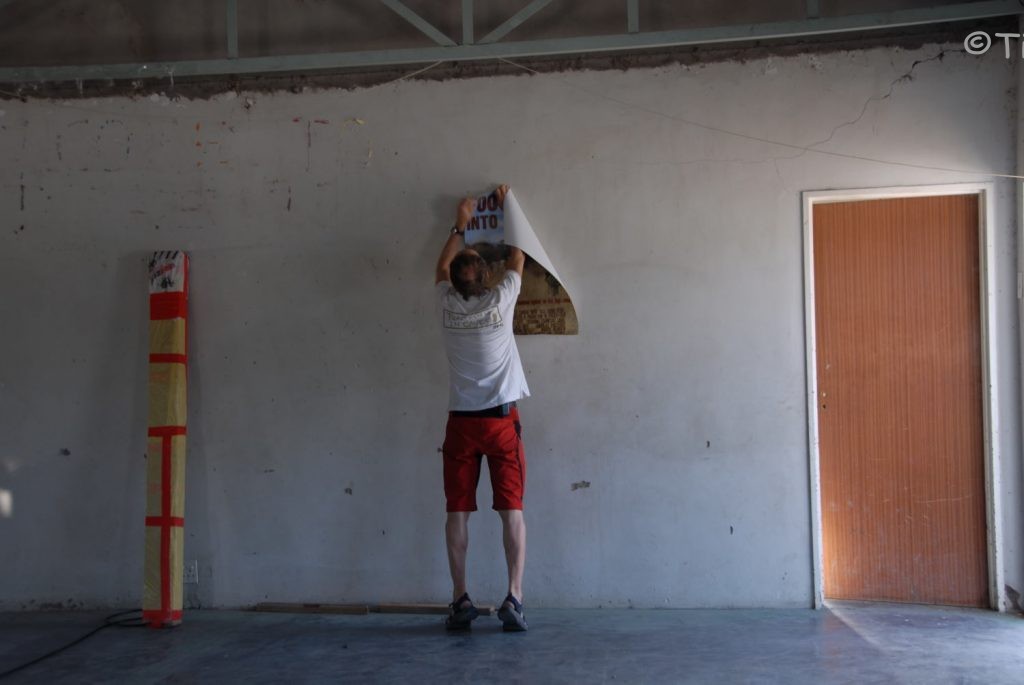Which kind of „homecoming“?
During the first research episode of ‚Tracking in Caves‘ in 2013 a TV documentary was filmed on locations in Namibia and France. The whole undertaking was constantly accompanied by the film crew and this resulted in a 90′ documentary that was broadcasted on Arte TV in Germany and France synchronically in September 2014.
This documentary was later translated into English and with this copy Andreas and Tilman in 2015 went back to Namibia with the purpose of making the film „come home“ to the communities from where the trackers came. In order to show the documentary to all, a screen, a projector and a generator travelled with the group. These screenings were accompanied by introductions and explanations of the three San trackers to make better understandable what the task of the research had been and which places were visited. The shows were not restricted to the home villages of the three trackers but several other places were also visited, some in remote areas and as far off as Tsodilo in Botswana and some in cities like Windhoek or Rundu. Eventually there were twelve different places where the documentary was shown to a total audience of several hundred people.
With the comments of the trackers to ‚their‘ film, the „homecoming“ developed into a mission of the three men who unexpectedly became something like ‚cultural ambassadors‘ in their own culture. Because during the discussions after the screenings it turned out that almost nowhere do the people have permission to hunt. Accordingly tracking becomes void for them and especially young people normally show little interest in learning it. But with the loss of this knowledge people also loose what connects them to their ancestors, so the lack of opportunities to practice tracking also cuts a link to their identity and their traditional cultural knowledge which only they could have. In some places becoming aware of this caused some sadness with the trackers and with their audience. Besides, contacts to other trackers were made, and during several workshops the methodology of age, sex and other feature determination was elaborated and fed into scientific papers co-authored by all team members.
During part of this round trip through northern Namibia an educational truck of EduVentures in cooperation with the National Museum accompanied the group. Thus schools were contacted in rural areas, bringing the notion to the students that an encompassing ecological knowledge is the indispensable basis for expert tracking.
Towards the end of the round trip a part of the group made a short exploration trip of two days to the upper parts of the Brandberg (Daureb in Damara language) to see some of its outstanding rock art.
The whole „Homecoming“ was again accompanied by media workers, in this case writing journalists, a photographer and a graphic artist who documented the screenings and eventually produced big articles for the largest German weekly, Die Zeit, and the monthly journal Geo (see also „media coverage“).

